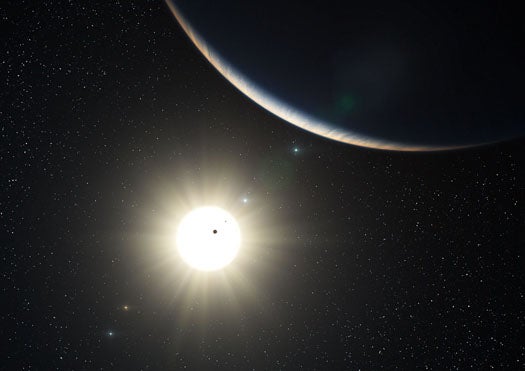Kepler Analysis Projects One-Third of Sun-Like Stars Have an Earth-Like Planet Orbiting
One of the fun things about astronomy is that we can only know so much through empirical observation, yet we...

One of the fun things about astronomy is that we can only know so much through empirical observation, yet we can “know” so much more through enlightened, mathematical guesswork. Such is the nature of the most interesting new science paper I’ve come across on the Internet today. In it, Wesley Traub of CalTech crunches some Kepler data and makes a tantalizing mathematical prediction: one-third of sun-like stars have at least one earth-like terrestrial planet orbiting in their habitable zones.
If that turns out to be the case, that’s big news of course. The habitable zone, or the “goldilocks zone” as it’s often known (not to close to the star, not too far away), is the orbital range where it’s possible for liquid water to exist. Thus, it’s the range where life as we know it could feasibly take root.
The planet-hunting Kepler observatory is designed specifically to seek out planets orbiting distant stars, and thus far its been a boon for exoplanetary science. In 136 days it has scanned some 150,000 target stars looking for the signature wobble exerted on those stars by orbiting satellites. In doing so, it has found 1,235 potential planets.
It’s from that data that Traub has extracted his conclusion. He looked particularly at the stars that are most like our sun–those classified F, G, or K. He then looked at the kinds of planets that are most often found orbiting them and at what ranges they orbit. In his analysis, he notes many interesting (and somewhat expected) things, like the fact that nearly a third of the planets Kepler has found orbit their stars in less than 42 days, putting them too close to be in the habitable zone (this is also because planets closer to their stars are easier for Kepler to see).
Larger terrestrial planets out there in the habitable zone are harder for Kepler to spot, but that doesn’t mean they’re not there. And Traub says his number crunching allows us to get a pretty good idea of how many there should be. Using some math we don’t pretend to understand, he plugged in the numbers for longer orbits–orbits in the habitable zone–into his analysis. The finding: “About one-third of FGK stars are predicted to have at least one terrestrial, habitable-zone planet.”
That’s not to say they are inhabited, or that they do have liquid water, or that they even exist. But Traub’s math suggests that they should exist, at least until more data changes the equation. And for now, that spells a lot of potential goldilocks planets. Read the full paper via arXiv.